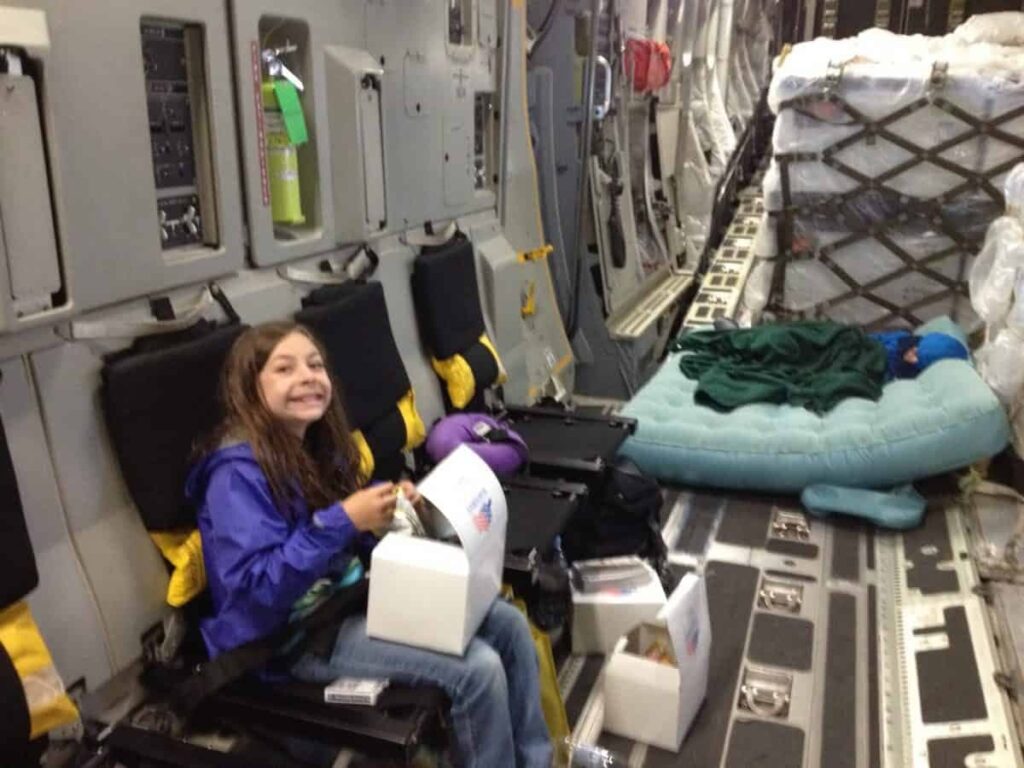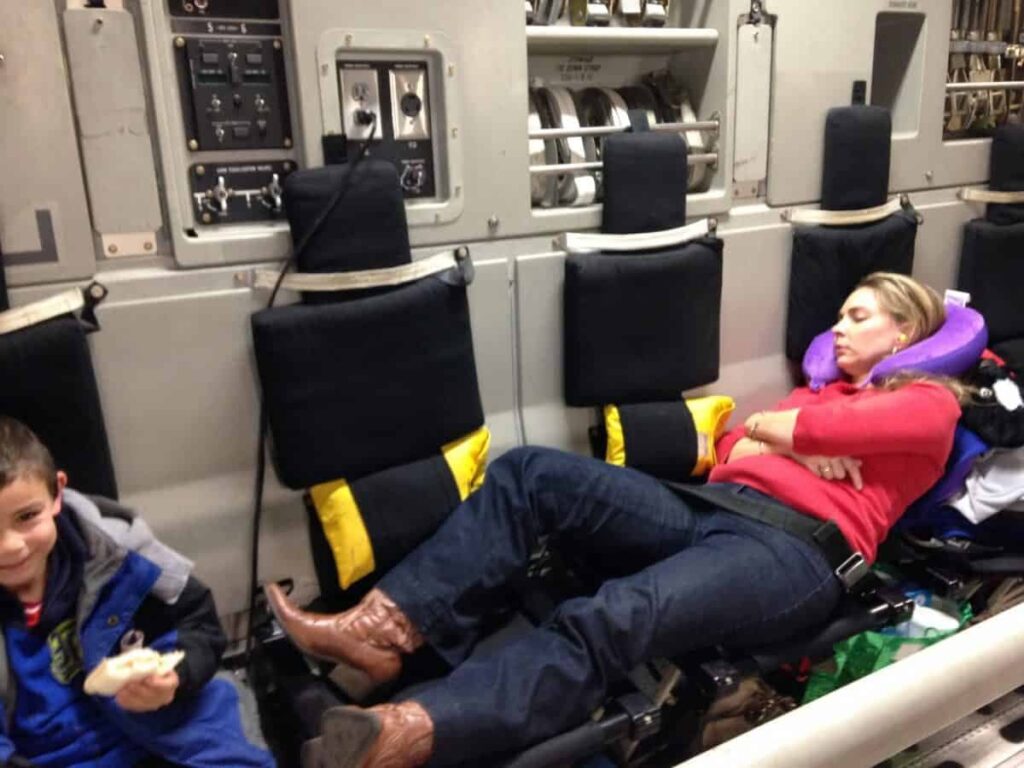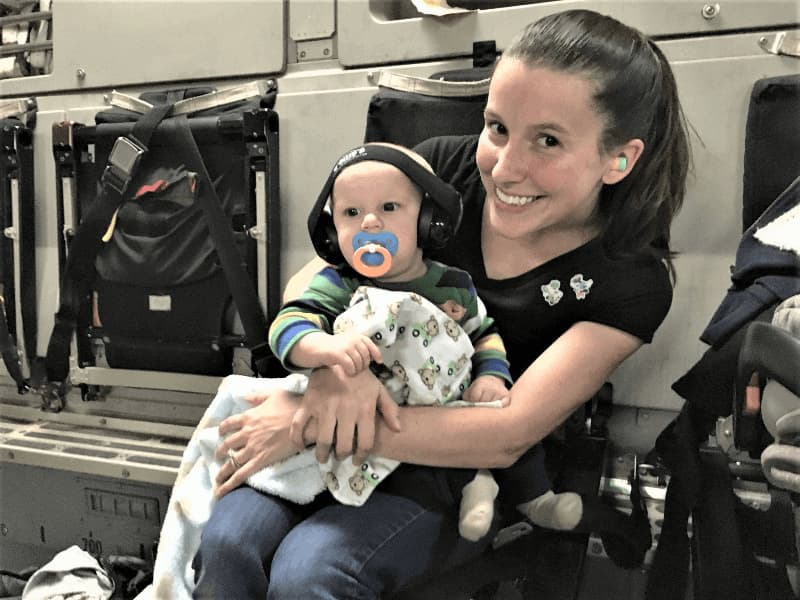Traveling military-style can be challenging for families. You have to be flexible and patient. You must be prepared to purchase commercial tickets if military flights are filled up, especially during peak travel periods such as summer after kids are out of school and on holidays. Before you begin planning, make sure you are eligible to travel Space-A. You can do this by visiting the Air Mobility Command’s Space-A Travel page and figuring out your category.
What is Space A in the Military?
Space A refers to free and low-cost military flights (also known as missions) for active duty personnel, retirees, and their dependents when seats are available. Space A can be a great perk if you are willing to put in the time and effort to track flight schedules and seat counts!
Space-A travelers are divided into six categories, with Category 1 being the highest priority. When seats become available, terminal staff conduct a “Roll Call” for the passengers in each category and select those who want to fly. If there are not enough seats for all of the travelers who have signed up, the selection process starts over again with lower-numbered categories.
As a general rule, if you are CAT-1 or higher, you have a good chance of getting on a mission, but that is not always the case. During peak travel times (holidays, summer PCS season) and when many reservists travel for training, getting on a flight may be more difficult.
You can sign up for Space-A at any military passenger terminal that offers flights. You can do this in person, by phone, or by e-mail. It is important to track each of the flights (also known as missions) from your departure base(s) so that you can know when there is a chance of getting on.

Do I Qualify for Space-A?
The eligibility criteria for Space-A travel varies by branch of service. Eligible individuals can fly for personal travel or for official military business. Space-A is open to active-duty military, retirees, and their families. In some cases, dependent children are also eligible to travel. Dependents must be accompanied by their sponsor.
In addition to a sponsorship, other criteria for Space-A eligibility include the purpose of travel, category of travel, and family status. Travelers who are on EML or emergency leave have a higher priority than those traveling for non-EML reasons. The Air Mobility Command website lists the categories of travel for Space-A flights. Travelers are assigned a category based on a combination of their eligibility status and purpose of travel. Categories start at Category VI, which includes Reservists on non-EML or permissive TDY; retirees on both EML and ordinary leave; and veterans with a permanent service-connected disability rated as total or 100%.
If seats become available on a flight, the terminal staff will announce roll call and select passengers to board. It’s important to stay at the terminal until boarding time. Passengers must be prepared for long waiting periods, especially during peak travel times, such as holidays and Department of Defense Dependent School summer vacations. For international trips, passengers should be prepared for a multi-legged journey with stops in other countries.

Do you Need a Passport for Space-A?
If you plan to travel Space-A outside the continental United States (CONUS), you must have a valid passport. You should also have any required documents for your destination country, including a visa if necessary. Check the official Air Mobility Command website for specific information and guidance.
You can increase your chances of catching a flight by having flexible travel plans and traveling during non-busy seasons, such as during the winter holidays or summer PCS season. Also, catching a flight to or from the closest base to your desired destination is generally easier than to a far-away base.
Once you’re authorized for Space-A travel, keep track of flight schedules at your departure base(s). Monitor them regularly to see if the flights you want to sign up for are coming up soon. You can then sign up for the flight and wait for the passenger terminal to call your name at roll call. You’ll be selected first by category and then by the date and time of your signup.
Reservists on emergency leave or on Environmental Morale Leave (EML) and their accompanying dependents receive priority for seats in most categories. Authorized BLUE retirees and their accompanied dependents can fly Space-A, but those in Category VI have limited eligibility. The military doesn’t guarantee that it can get you on a flight, and waiting times can be long and uncomfortable.
Can a DoD Civilian Fly Space-A?
Eligible service members, retirees, and family members can fly on military or military-contracted aircraft for little or no charge through Space-A. However, not all service members are eligible to fly Space-A or are able to use it on every flight. Space-A is based on a priority system that divides travelers into categories, with higher-numbered categories getting first priority. For example, if you’re in category 6, it’s unlikely that you’ll get on a flight if someone in Category 1 gets on.
For details on the categories and how to sign up for Space-A flights, visit the Air Mobility Command’s Space-Available Travel page. Then, review the 72-hour flight schedules for the passenger terminal where you want to fly. Most passenger terminals publish these on social media pages.
For instance, a Facebook page for the Fort Carson passenger terminal frequently posts upcoming Space-A flight information. It also lists a Roll Call time when staff will announce the names of passengers who have been selected for the flight. Once you know the process, it’s important to be patient. The sooner you sign up, the better, as priority within categories is based on your initial signup date. Also, be prepared to change your itinerary if necessary and have a backup plan if a flight is canceled or the seat you need becomes unavailable.
